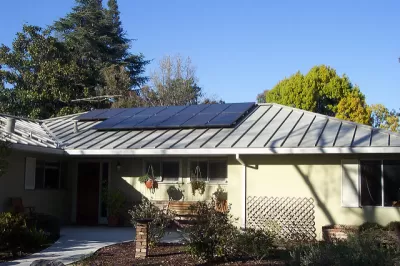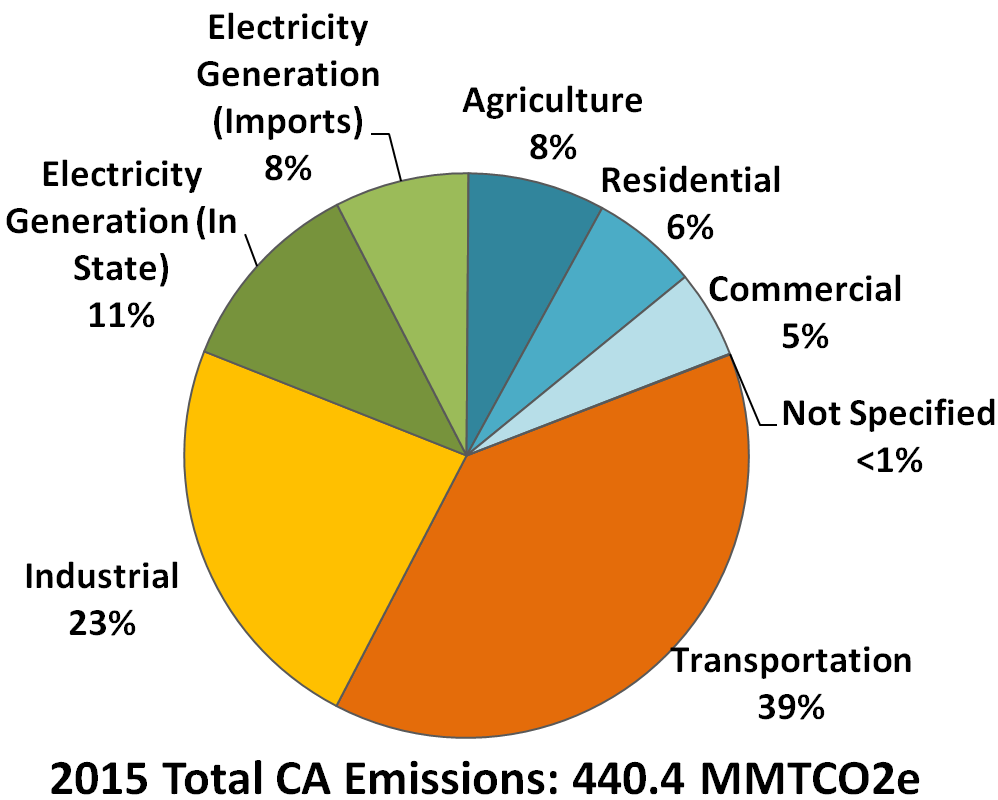San Francisco Chronicle energy reporter David R. Baker sheds some light on the nation's first state building code requiring that solar panels be included in new home construction, adopted by the California Energy Commission on May 9.

All five commissioners of the California Energy Commission voted to adopt the new requirements to the Building Energy Efficiency Standards, aka Title 24, mandating that solar panels be included on all new single-family homes and multi-family homes up to three-stories, starting in 2020. [See earlier post prior to the vote].
"Under the new requirements, builders must take one of two steps: make individual homes available with solar panels, or build a shared solar-power system serving a group of homes," reports Ivan Penn for The New York Times on May 19. "In the case of rooftop panels, they can either be owned outright and rolled into the home price, or made available for lease on a monthly basis."
One of the main criticism of the new rule is that it adds to the cost of new housing, not exactly helpful when the state has the highest poverty rate in the nation when housing costs and other living expenses are considered. "But the commission’s staff estimated that while the mandate would add about $40 to a typical new home’s mortgage, it would cut the monthly utility bill by $80 — or more if solar prices continue to fall," writes David R. Baker, energy reporter for the San Francisco Chronicle.
Meanwhile, climate hawks argue that the mandate doesn't go far enough toward meeting the California Public Utility Commission's Zero Net Energy goal.
Seven cities in California already have adopted residential solar panel requirements, states Baker during a half-hour segment of KQED Forum (audio available) on May 10 devoted to the landmark clean-energy building standards. Many of the points that Baker made during the call-in radio show did not appear in his article in the Chronicle.
Building code rule is distinct from renewable energy legislation
Host Michael Krasny asks Baker how the requirement will help the state meet its renewable portfolio standard goal, set by Senate Bill 350 in 2015 (posted here), of getting half its electricity from renewable sources by 2030.
"That goal is somewhat separate and distinct from [the new standard]," responds Baker. It regulates the energy sources that utilities purchase and sell to their customers, whereas this rule affects homeowners, and will lower their energy requirements. "So these new homes almost disappear from the demand load on the grid." Rather than affecting the renewable portfolio, the solar energy generated by the new homes will enable the utiities to purchase less energy.
Too much solar power; not enough storage
Another important point he makes is that the new solar energy will exacerbate the current surplus energy problem which occurs during the daytime when the sun is shining. When people return home from work, that's when demand ramps up, creating a strain on the grid.
The problem would be mitigated by energy storage, which Baker calls "one of the biggest questions hanging over Calfornia's energy future." Legislation introduced last year by Sen. Scott Weiner (D-San Francisco), SB 700, "would create a 10-year rebate program designed to grow the California local storage market and make storage more affordable for consumers," wrote Kathie Zipp for Solar Power World last June. "SB 700 is currently pending in the Assembly Utilities and Energy Committee," notes Weiner in his press release issued just prior to the CEC vote.
How much will the solar requirement help meet the state's climate goal?
California is required by Senate Bill 32 to reduce its emissions by 40 percent below 1990 levels by 2030. It will not be easy. Requiring solar panels on new home construction, or building more solar power plants, for that matter, doesn't address the state's main emissions problem.
The most recent California Air Resources Board greenhouse gas inventory report, released almost a year ago shows that emissions from the largest sector, transportation, representing 39 percent of total emissions, have been growing. By contrast, electricity generation accounted for 19 percent of total emissions and are declining.
Credit: California Air Resources Board (CARB) – Emissions by Sector, Greenhouse Gas Inventory
[Emissions from the commercial and residential sectors are driven by the combustion of natural gas and other fuels.]
Another critical look at the new solar standard is offered by David Roberts, Vox's energy and climate change writer, on May 15: "California will require solar panels on all new homes. That’s not necessarily a good thing." He offers seven reasons for the "case against the mandate" and nine in support of it.
California’s greatest needs — its housing crisis, its transportation emissions, the carbon intensity of its economy — would all be well-served by greater urban density. That means infill and building up; the requirement for solar panels should never stand in the way of densifying. I wish SB 827, which was density on steroids, hadn’t died in committee.
Hat tips to David McCoard and Kathy Dervin.
FULL STORY: Solar to be required on most new homes in California starting in 2020

Alabama: Trump Terminates Settlements for Black Communities Harmed By Raw Sewage
Trump deemed the landmark civil rights agreement “illegal DEI and environmental justice policy.”

Study: Maui’s Plan to Convert Vacation Rentals to Long-Term Housing Could Cause Nearly $1 Billion Economic Loss
The plan would reduce visitor accommodation by 25% resulting in 1,900 jobs lost.

Planetizen Federal Action Tracker
A weekly monitor of how Trump’s orders and actions are impacting planners and planning in America.

Waymo Gets Permission to Map SF’s Market Street
If allowed to operate on the traffic-restricted street, Waymo’s autonomous taxis would have a leg up over ride-hailing competitors — and counter the city’s efforts to grow bike and pedestrian on the thoroughfare.

Parklet Symposium Highlights the Success of Shared Spaces
Parklets got a boost during the Covid-19 pandemic, when the concept was translated to outdoor dining programs that offered restaurants a lifeline during the shutdown.

Federal Homelessness Agency Places Entire Staff on Leave
The U.S. Interagency Council on Homelessness is the only federal agency dedicated to preventing and ending homelessness.
Urban Design for Planners 1: Software Tools
This six-course series explores essential urban design concepts using open source software and equips planners with the tools they need to participate fully in the urban design process.
Planning for Universal Design
Learn the tools for implementing Universal Design in planning regulations.
Caltrans
Smith Gee Studio
Institute for Housing and Urban Development Studies (IHS)
City of Grandview
Harvard GSD Executive Education
Toledo-Lucas County Plan Commissions
Salt Lake City
NYU Wagner Graduate School of Public Service






























